Bosco Verticale spurred on a new kind of eco-building revolution, one that goes well beyond green roofs. Now, architects are pushing beyond the architecture/landscape divide in the most daring and beautiful ways.
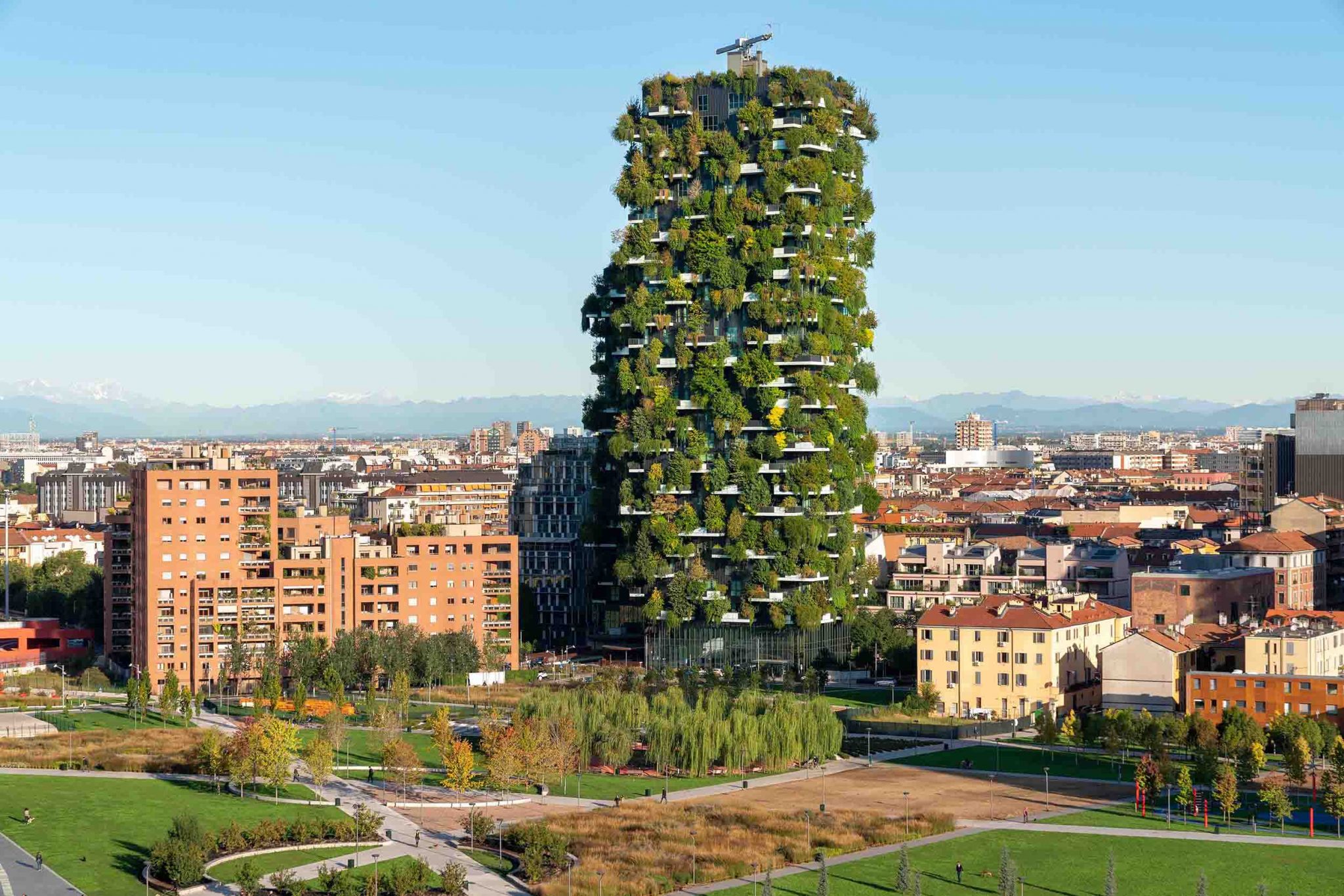
Milan’s Bosco Verticale residential towers rise 27 stories and contain 900 trees. Photo: Boeri Studio
In 1957, Italian journalist Italo Calvino penned a fictional book called The Baron in the Trees, which told the story of a young boy named Cosimo Piovasco di Rondò who decided to live his entire life in the trees. Cosimo enjoyed a rich and adventurous life among the foliage and even found a way to die of old age without letting his remains touch the earth. Fittingly, this is the book that inspired Milan architect and urban planner Stefano Boeri to build Bosco Verticale, the most iconic twin towers of the 21st Century, notable for their balconies that together contain 900 trees, 5,000 shrubs and 11,000 perennial plants.
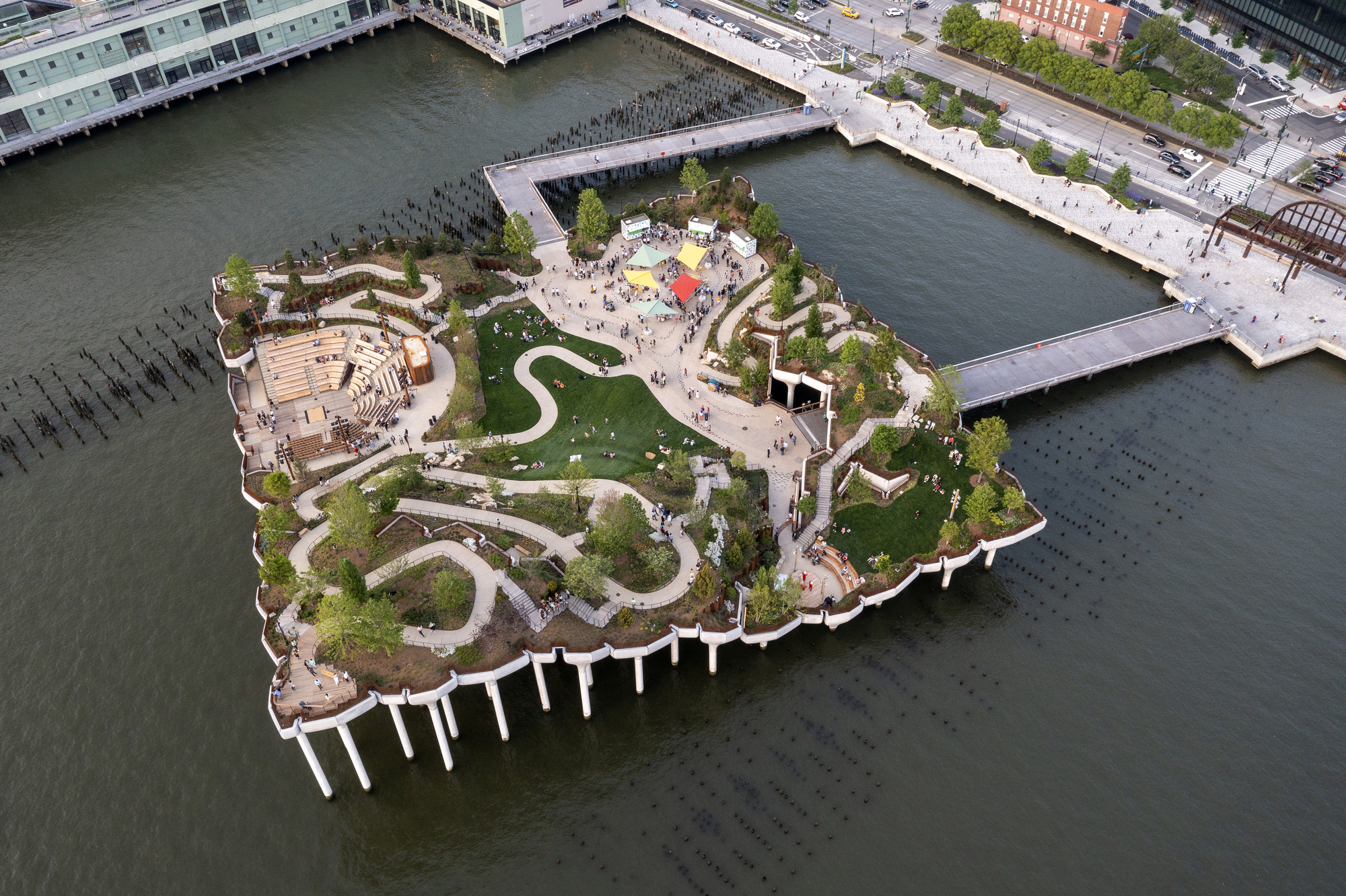
Little Island, a 2.4-acre elevated park and open theatre space, opened in May of this year in New York City. Photo: Timothy Schenck
Advancements in horticultural science and technology made his nature-loving architecture possible, and its realization in 2014 took green design to a whole new fantastical level. It has since emboldened many more architects to invent structural forms that merge with nature. Among the most recent is Little Island in New York, by UK-designer Thomas Heatherwick in collaboration with landscape architect Signe Nielsen of MNLA. Reachable by two L-shaped pedestrian gangways, the whimsical parkland is elevated above the Hudson River by a grid of 132 concrete piles clumped together to form a distinctly undulating contour. A series of pathways weave through trees and extravagant gardens atop the island, connecting three outdoor performance venues, including an acoustically-optimized 687-seat amphitheatre. Topographically, it isn’t easy to describe Little Island. It is landscape architecture, for sure. But it is also a garden habitat, a theatre complex, an amusement park and a work of art.
Parametric modelling has played a significant role in figuring out how living ecologies and structural forms can co-habitat. For Little Island, engineering consultant Arup used advanced prefabrication techniques to ensure the precast piles will withstand whatever extreme conditions the Hudson River might throw at them.
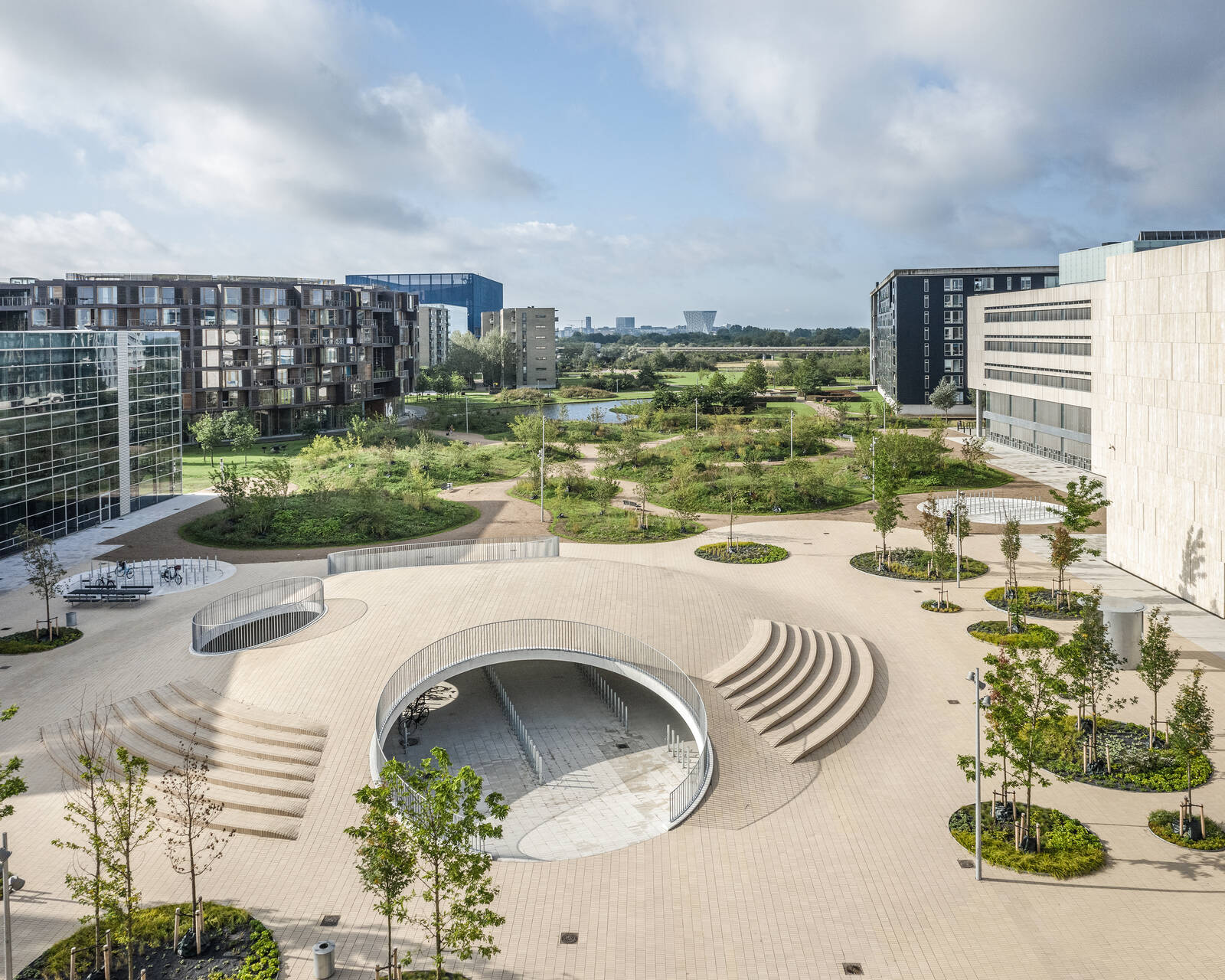
Karen Blixen’s Plads Public Square in Copenhagen absorbs flood waters in semi-submerged hollows while providing greenery and gathering zones for visitors. Photo: COBE
Climate change, too, has influenced our desire to get closer to nature and, potentially, save us from its impending threats. In Copenhagen, local firm COBE addressed many critical issues with Karen Blixen’s Plads Public Square, the city’s largest outdoor square. From a drone’s perspective, the 20,000-square-metre open space is sculpted into a pattern of circular garden beds that merge with the gentle curves of a half-dozen concrete domes. These raised forms are more like rooftops to semi-submerged spaces where cyclists park their bikes. They also double as water reserves. By letting water drain into the depressions when storms hit, it gives rainwater a chance to evaporate rather than flood while simultaneously creating small wet biotopes for supporting biodiversity.
It’s remarkable to think that green roofs were a novelty only the most adventurous adopted a decade ago. The focus has now shifted to the creative opportunities natural elements can bring. Canada is not without some exceptional examples.
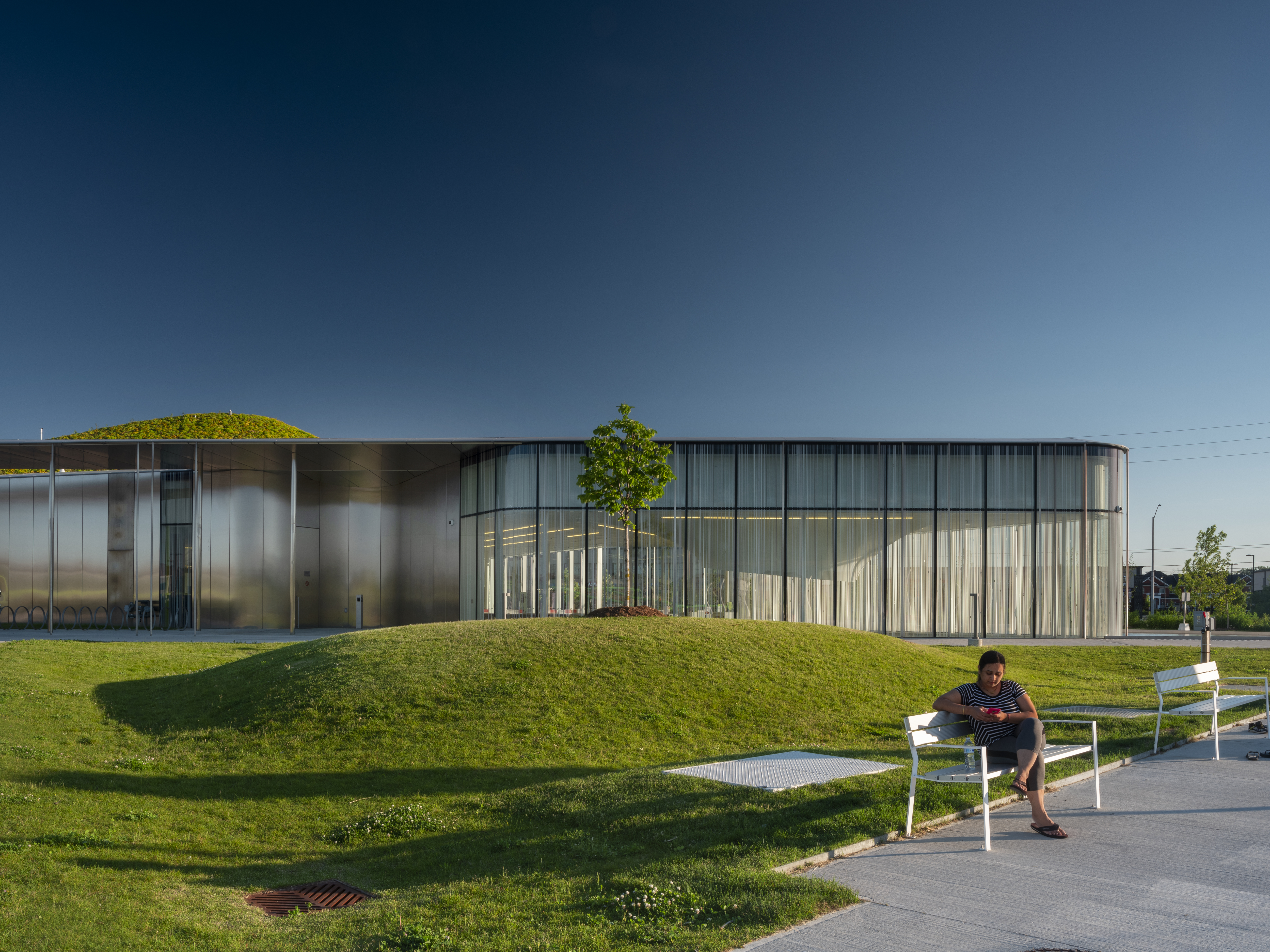
Springdale Library is surrounded by greenery, reflective pools and courtyard-like areas that blur the line between the building and its surroundings. Photos: Nic Lehoux
One of my favourites is the Springdale Library and Komagata Maru Park in Brampton, Ontario. A mountainous green roof rises to five metres at its peak, capping off a single-story volume clad in glass and steel. Designed by Toronto firm RDHA, the project features various landscaped intersections, including a reflective pool that butts up to the side of an exterior wall. It leaves the impression the building is partially submerged, while inside looking out, library-goers get a tranquil view of the still water as they peruse the stacks.
However, what’s also interesting about the project is its location – within a prosaic suburban development and facing onto a strip mall. Architecture becoming landscape has shifted once more, beyond tourist cities like Milan and New York. It’s now coming to a town near you.
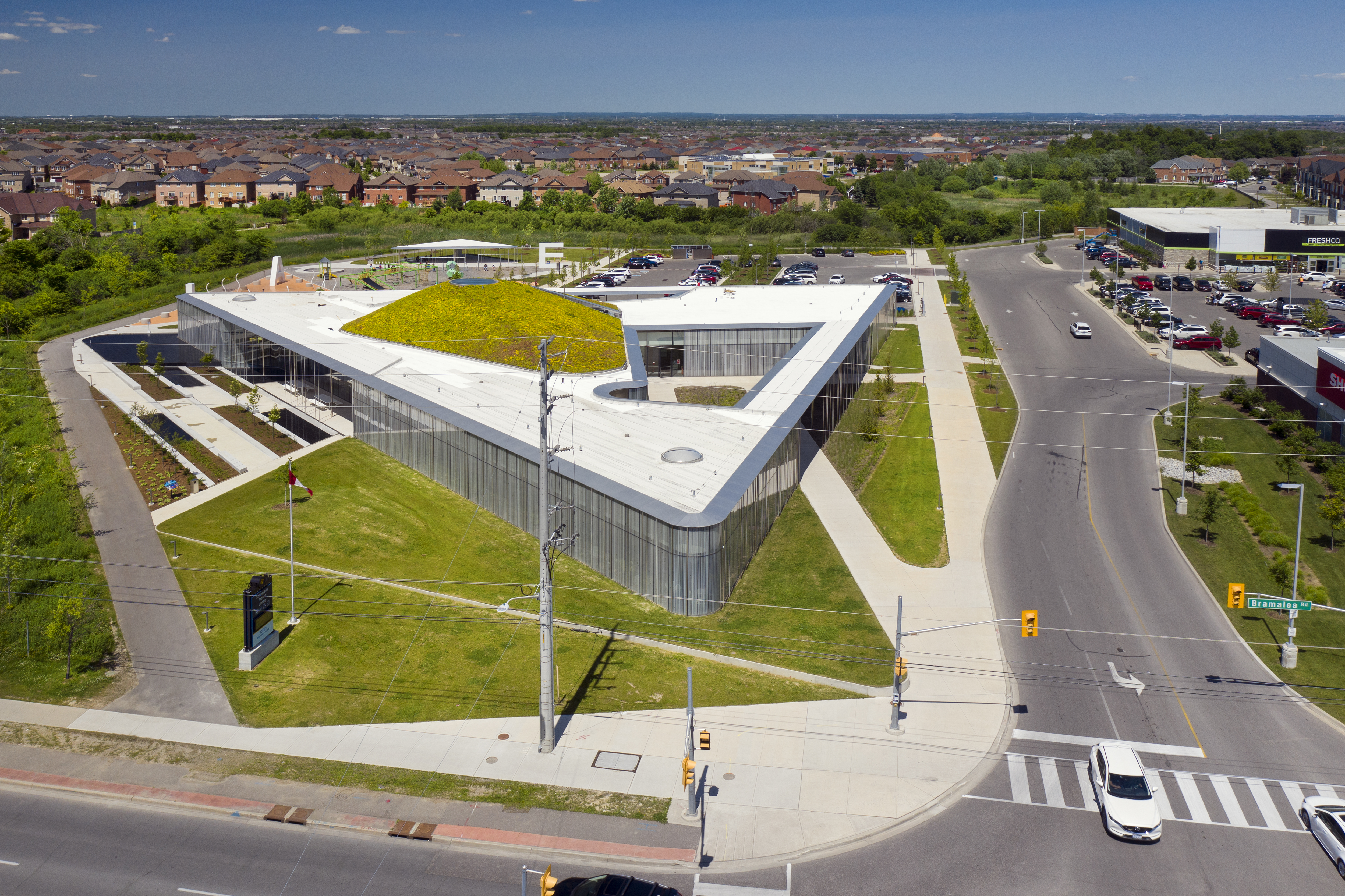
Designed by RDHA, the library and its mountainous rooftop stand out as a dramatic alternative to the prosaic suburban surroundings.
By Catherine Osborne